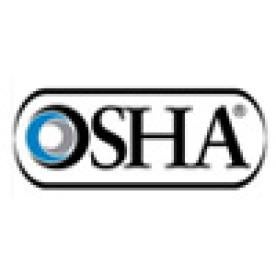On November 8, 2013, the Occupational Safety and Health Administration (“OSHA”) published a proposed rule titled “Improve Tracking of Workplace Injuries and Illnesses” (“Proposed Rule”). Under the Proposed Rule, employers would be required to regularly and electronically submit to OSHA the data regarding workplace injuries and illnesses that many employers currently keep in a physical log. OSHA intends to provide a secure website for the electronic submission of this information and to make the injury and illness information publicly available after redacting personally identifiable information and protected health information. The purpose of the Proposed Rule, according to OSHA, is to improve workplace safety and health through the collection of useful, accessible, establishment-specific injury and illness data to which OSHA currently does not have direct, timely, and systematic access.
Initially, the deadline set for submitting comments on the Proposed Rule was February 6, 2014. After holding a public meeting and receiving a flood of written comments from stakeholders concerned about the cost, feasibility, and privacy concerns posed by the Proposed Rule, OSHA extended the deadline for submitting comments twice—ultimately, the comment period closed on October 14, 2014. OSHA received nearly 2,000 comments from stakeholders expressing copious concerns about the Proposed Rule.
OSHA announced in the U.S. Department of Labor’s Agency Rule List that finalizing the electronic recordkeeping rule would be among its primary rulemaking efforts this year and that it expects to publish the final rule (“Final Rule”) in August 2015. The Final Rule will adversely affect all employers but is likely to present particular challenges for employers in the health care industry. Before the publication of the Final Rule, health care organizations may want to consider undergoing refresher training on OSHA’s recordkeeping requirements and conducting a review of their compliance with existing recordkeeping requirements, including ensuring that all injury and illness log entries are complete and correct.
Targeted Enforcement
OSHA has recently developed a number of mechanisms to enable the agency to quickly learn about potential workplace health and safety issues and target its enforcement efforts on what it perceives to be the worst actors. The agency has announced that the health care industry is among its top priorities for enforcement this year, reporting that health care workers experience an average of 600,000 work-related illnesses and injuries each year, far exceeding the number reported by other industries that OSHA considers high hazard, such as construction.
OSHA plans to focus considerable enforcement efforts on musculoskeletal disorders, in particular, which must be included in OSHA recordkeeping. Practically speaking, once the Final Rule takes effect, OSHA will be able to receive records of musculoskeletal injuries promptly, enabling it to immediately dispatch compliance officers to inspect health care facilities reporting such injuries.
Targeted enforcement will affect most health care providers but perhaps none more so than nursing and residential care facilities. OSHA has stated that it will renew the National Emphasis Program (“NEP”) for Nursing and Residential Care Facilities, which calls for increased enforcement at such facilities. Between the new electronic recordkeeping requirements and the NEP, nursing and residential care facilities should consider themselves prime targets for OSHA inspections and prepare accordingly.
Privacy Concerns
After publishing the Final Rule, OSHA will make employers’ injury and illness information public through a website that will enable anyone to search employers’ injury and illness reports. The public will be able to search how many injuries and illnesses occurred at each workplace, the title of the affected employee, and the circumstances related to each incident.
Because the circumstances of each incident will be included in the searchable data, it is entirely possible that the privacy rights of the affected employee and even those of patients and residents receiving treatment could be compromised. Although OSHA insists that private information will be scrubbed from the data before it is released to the public, the agency has not identified a means for doing so—nor has it established how it will accomplish this task when it is already lacking in both the fiscal and physical resources needed to do the job. Even if OSHA can effectively scrub the obvious identifiers, other information in the publicly shared data, such as the date of the injury, the type of injury, treatment, and job title, can be used in an attempt to determine the identity of affected workers, patients, and residents.
Unionization
Union organizing activity is on the rise in the health care industry. This industry is an attractive target for unionization because of the ever-increasing number of jobs that it provides and projections for continued rapid growth. The public release of health care employers’ injury and illness data will enable unions to easily identify health care employers with higher-than-average numbers of injuries and illnesses as targets for unionization.
Conclusion
The final contours of OSHA’s electronic recordkeeping rule remain to be seen, but considering strong signals from the agency, the Final Rule is quite likely to have a significant impact on the health care industry. Epstein Becker Green will continue to monitor the situation and keep the industry apprised of strategies for compliance with the Final Rule, upon its publication.



 i
i


